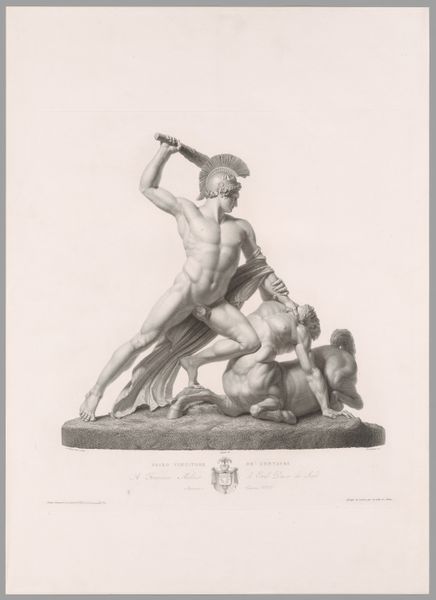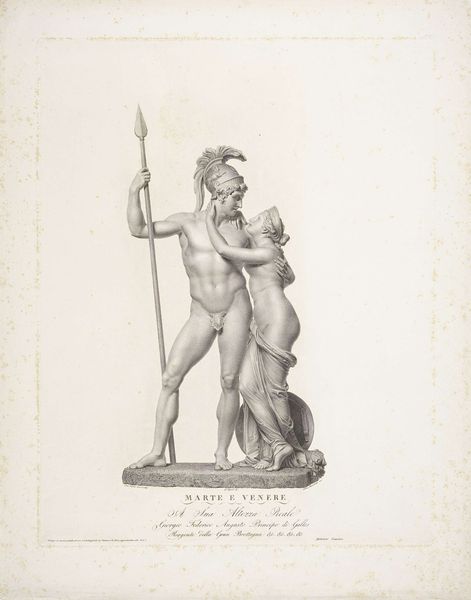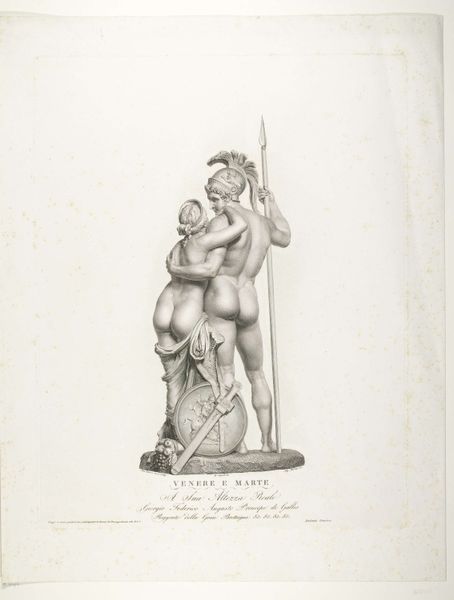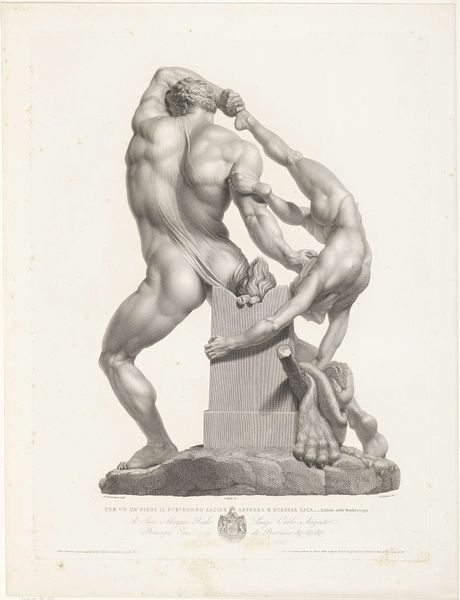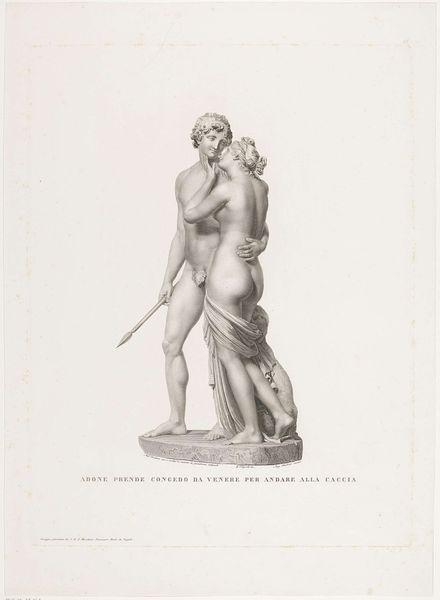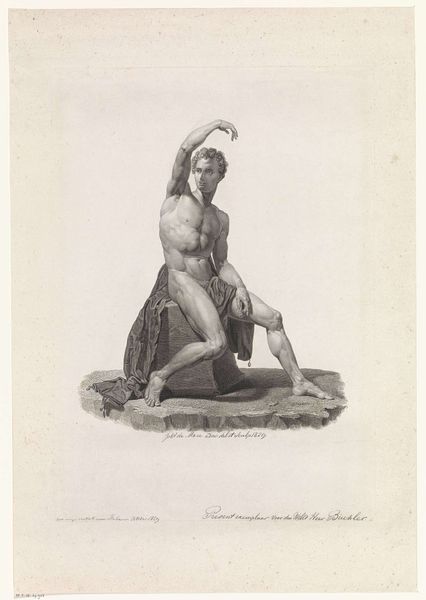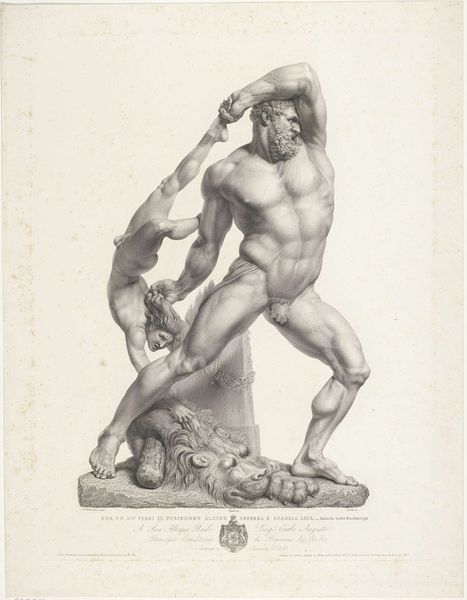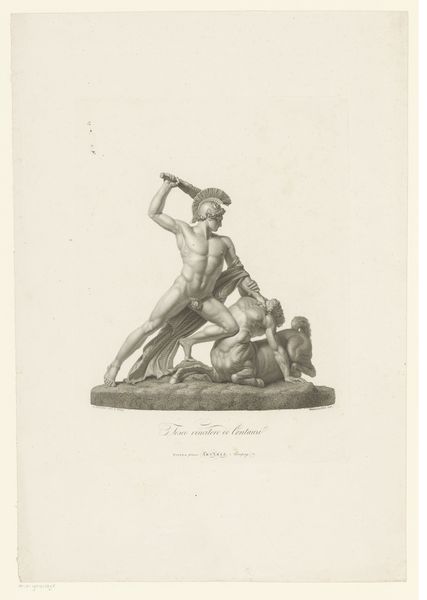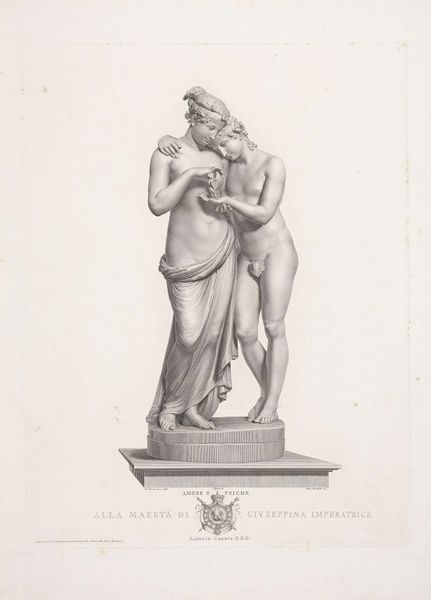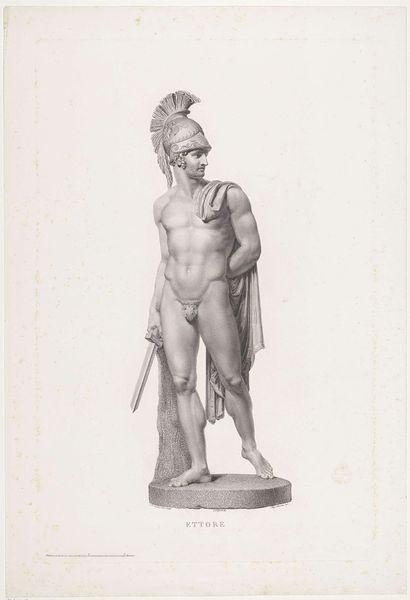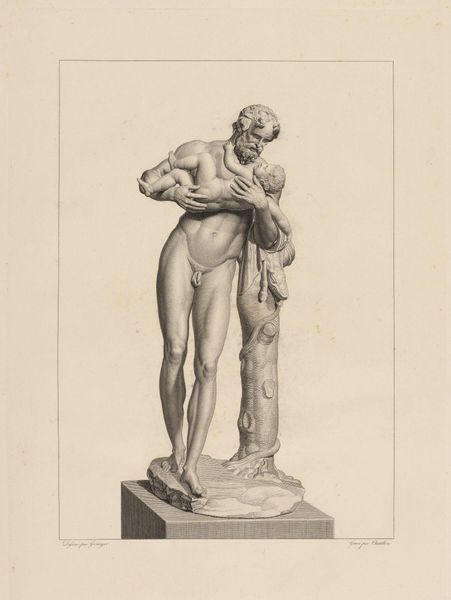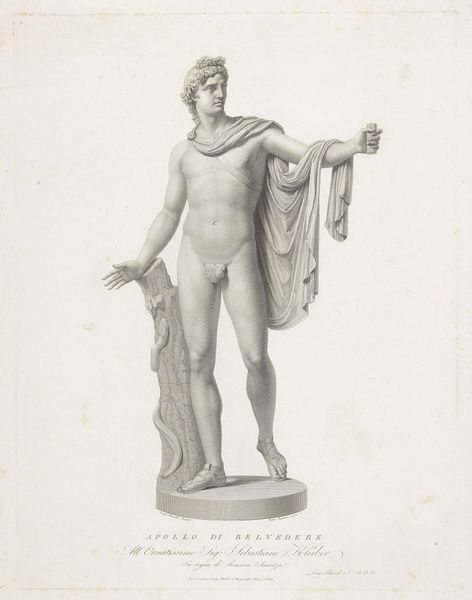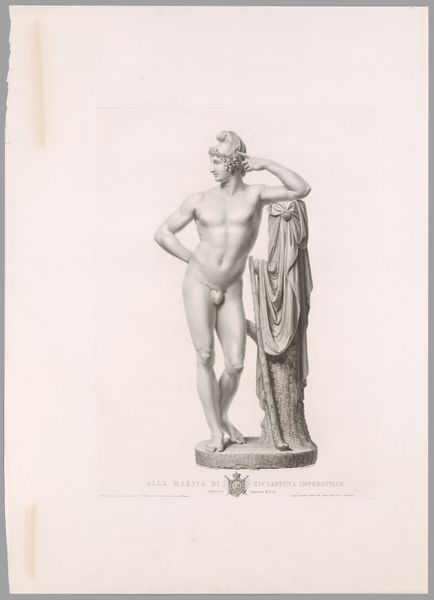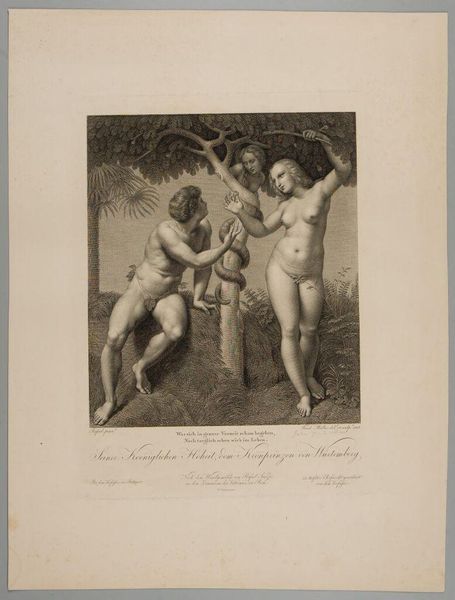
Dimensions: height 587 mm, width 556 mm
Copyright: Rijks Museum: Open Domain
Curator: This dramatic intaglio print by Pietro Bonato, dating from between 1775 and 1827, captures the scene of Theseus overcoming the Centaur. Editor: My first impression is the sheer muscularity; both figures are rendered with such intense anatomical precision. It almost feels like a study in idealised human form, a heroic aesthetic at play. Curator: Absolutely, and this links directly to its Neoclassical roots, harking back to the ideals of ancient Greek and Roman art, but consider also the enduring theme: the triumph of order, Theseus, over savagery embodied by the centaur. What psychological impact did such representations have? Editor: Well, the visual politics of the time must be factored in. This print emerged in an era obsessed with rationalism and the rediscovery of classical ideals, and those principles found expression in political structures as well as the arts. Representations like this helped construct cultural narratives around heroism and civic virtue. It is the image of triumph, of the victory of reason over raw emotion. Curator: The use of black and white engraving contributes to that stark moral contrast as well. Light falls strategically on Theseus, emphasising his idealized form. Bonato uses these symbols of classicism to highlight and support specific values and behaviors. The artwork becomes a medium for societal control. Editor: And think about the role of prints like this in circulating these ideals. Before mass media, engravings allowed these narratives of heroic masculinity to reach wider audiences and reinforce those power dynamics in various cultural settings. These prints weren't just aesthetic objects, they actively shaped perceptions. Curator: I am fascinated by the way the artist leverages the centaur as a psychological counterpoint, drawing on ancient associations between these creatures and unbridled passion to heighten Theseus's aura of reasoned authority. Editor: It's really compelling to consider how images like this helped lay the groundwork for defining and controlling not just political entities, but social and emotional landscapes. Curator: This analysis leaves me reflecting on how such powerful, seemingly simple visual symbols embed themselves in cultural memory and become instruments of control. Editor: And I am struck again by how deeply entangled aesthetics, power, and societal norms are—each reflecting and reinforcing the other.
Comments
No comments
Be the first to comment and join the conversation on the ultimate creative platform.
